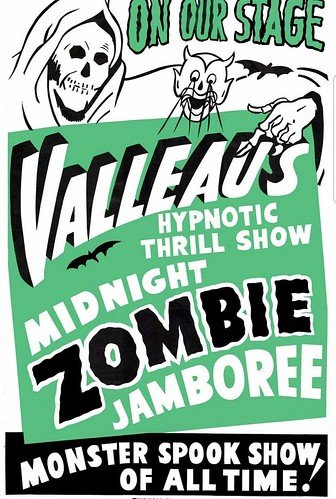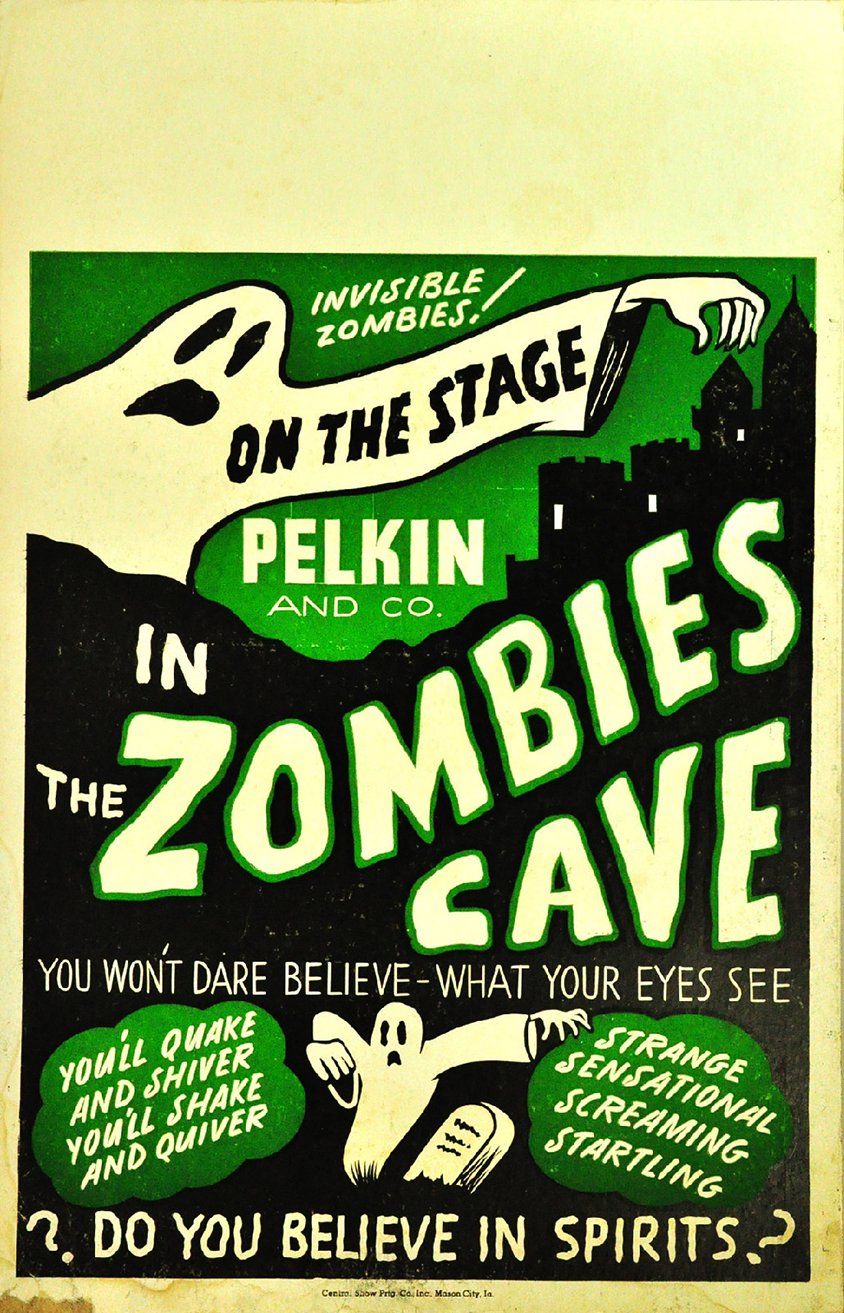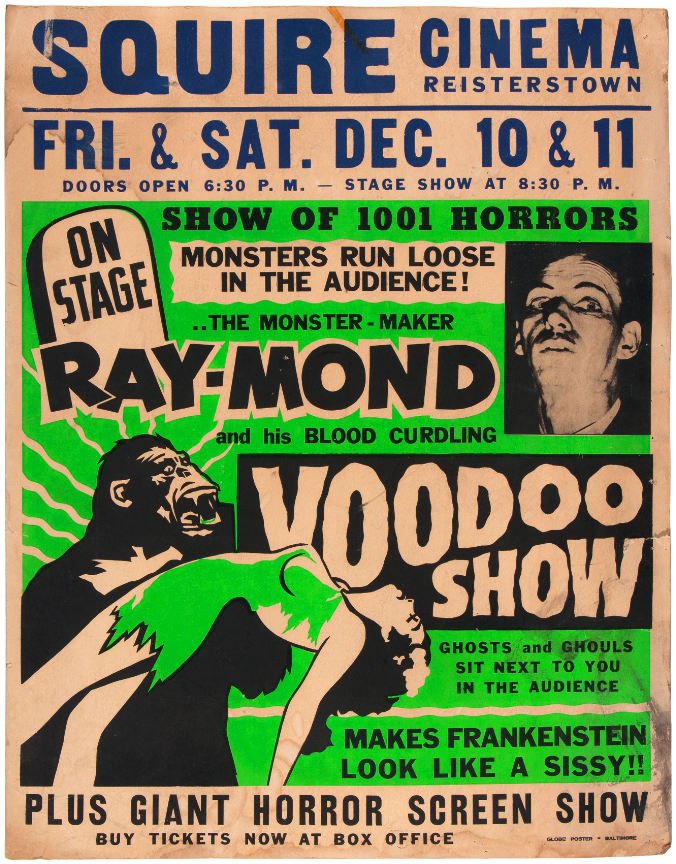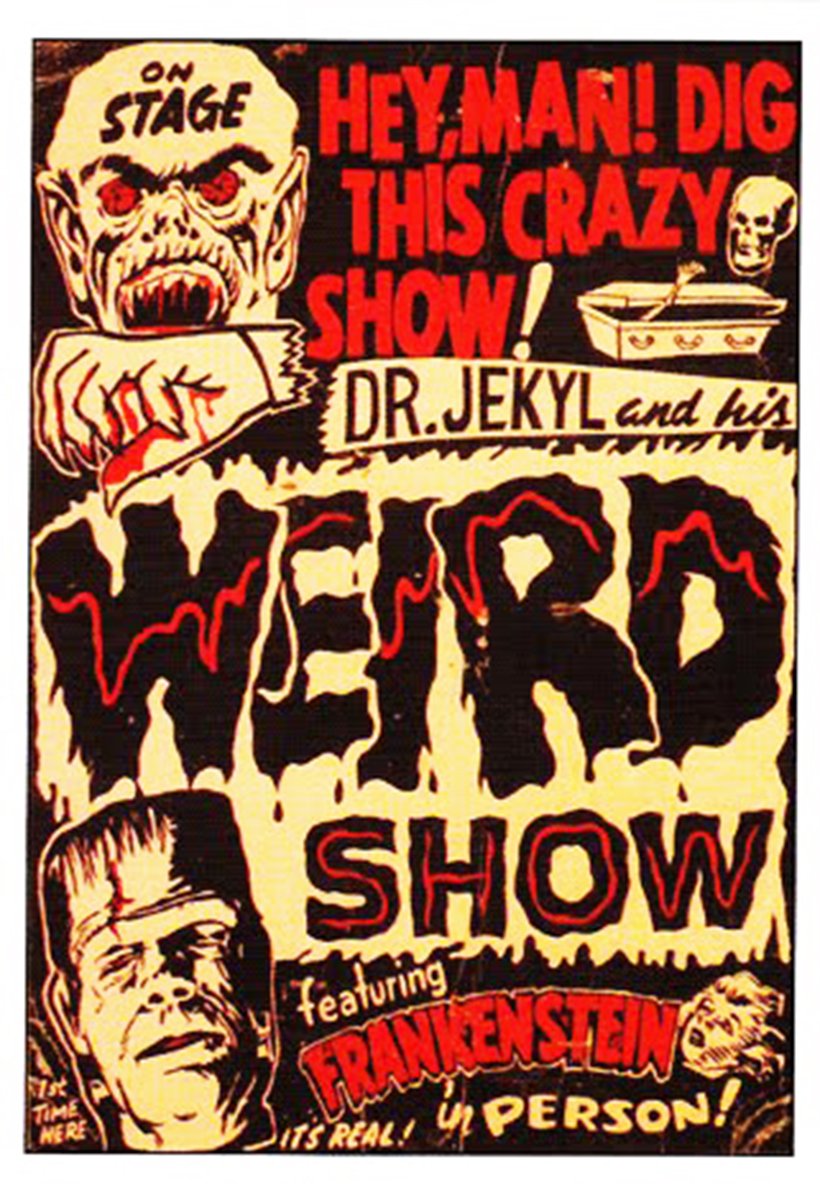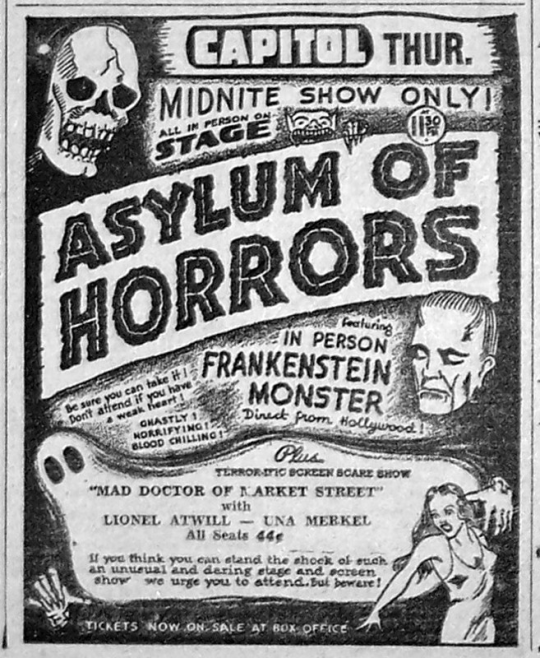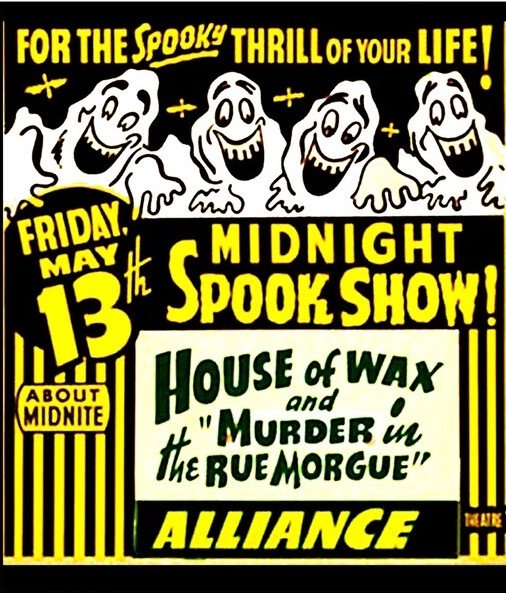R.I.P. the midnight spook show
These more theatrical elements bridged old and new storytelling techniques, and also provided a reason for people to go to the cinema.
Image Credit: Squire Cinema Reisterstown
The Midnight Spook Show were screenings of horror films that would include elements of interactivity. Following the emergence of television, film studios concocted a range of gimmicks in order to provide a reason for audiences to make the trek from the comfort of their living rooms to the picture palace. There was Cinemascope, 3-D, Smell-O-Vision, and of course, the Midnight Spook Show.
Actors would hide in the audience and frighten unsuspecting patrons. Ghosts, ghouls, and goblins would careen from the rafters, and large props would wait outside to greet arriving guests. These more theatrical elements bridged old and new storytelling techniques, and also provided a reason for people to go to the cinema.
The House on Haunted Hill featured a sentient skeleton in one of its more bone-chilling sequences. To accompany this, a prop skeleton would descend down from the ceiling in a deus ex machina display of pulleys and wires, flying over the audience and frightening oblivious visitors in the dark.
Monsters Crash the Pyjama Party sees a group of teenage girls unwittingly set up their sleepover in a haunted house that doubles as the laboratory of a mad scientist. His goal — to turn his new guests into gorillas, followed by chase scenes with people in gorilla suits. Live actors were placed amongst the unknowing audience, who were chased up and down the aisles of the theatre by gorilla-suited performers.
Director and producer William Castle eventually pioneered this mode of cinema. His film, The Tingler, follows the murderous rampage of a growth that — once removed from the protagonists spine — goes AWOL. As Castle inserts himself into the film and addresses the audience directly, the film is brought to a grinding halt to dissolve the boundaries of cinema screen itself. He warns that the eponymous tingler has been let loose in the very cinema that they are playing at. Electric buzzers were placed in the audiences’ seats to mimic the crawling of the creature, and actors were hired to scream aloud and grab other patrons.
The spook show as we knew it may have died, but its echoes can still be heard today. Whether it be the barf bags handed out in the 70s at screenings of The Exorcist, or the plethora of horror MMORPG (Massive Multiplayer Online Roleplaying Game) series that exist online like MarbleHornets — where audience participation pushes the story along. We will always have a craving for interactive horror, and the spectre of the Midnight Spook Show lives on to haunt us.
In our current age of streaming, with movie theatres closing worldwide, cinema must once again find reasons to justify paying for admission. Hopefully one day, the Spook Show shall rise from its grave to frighten us once more.


